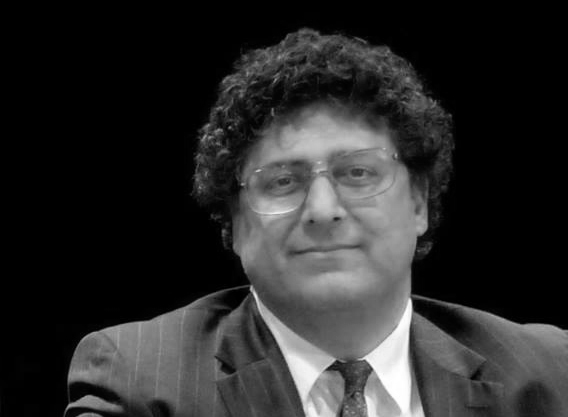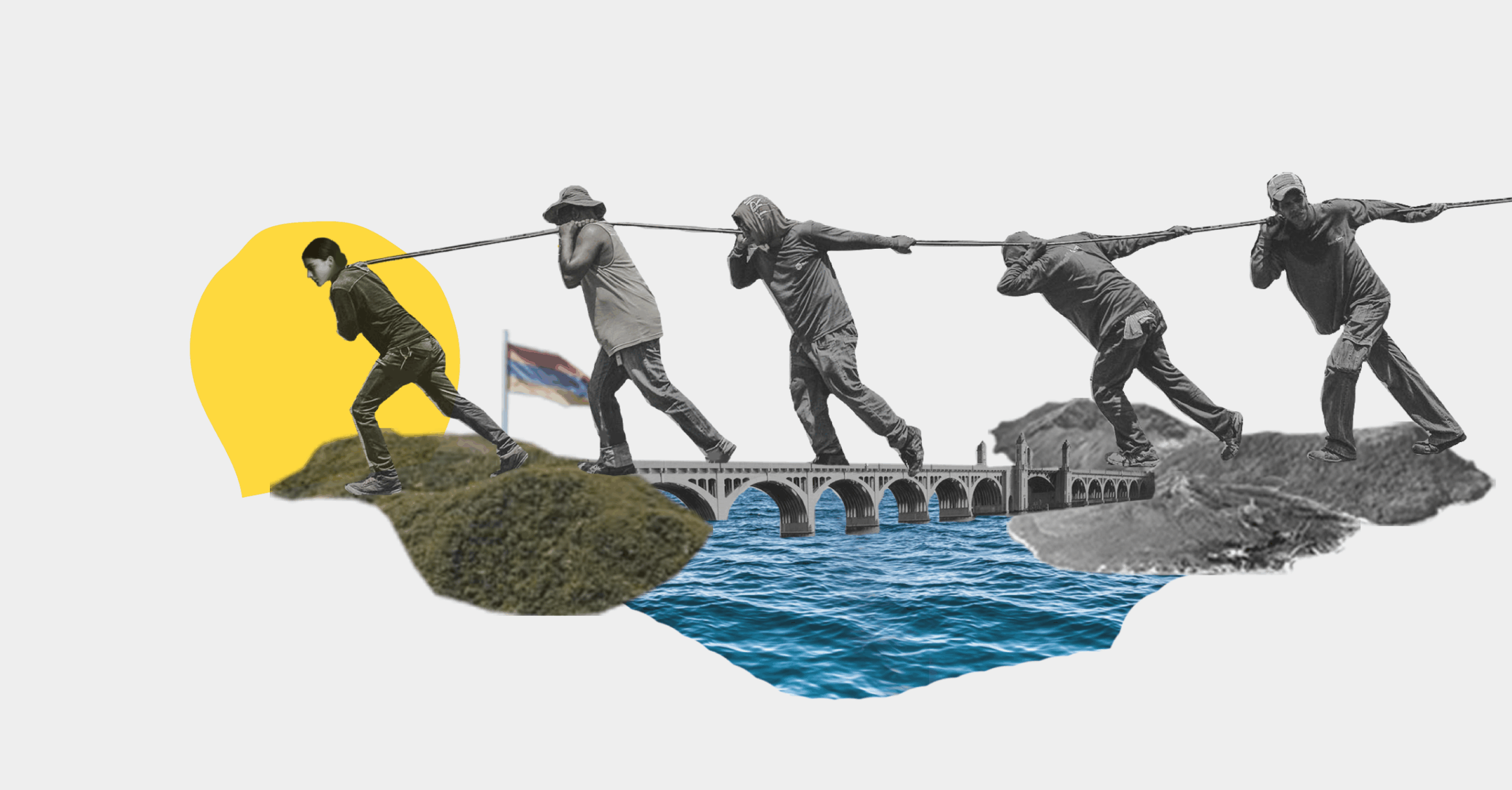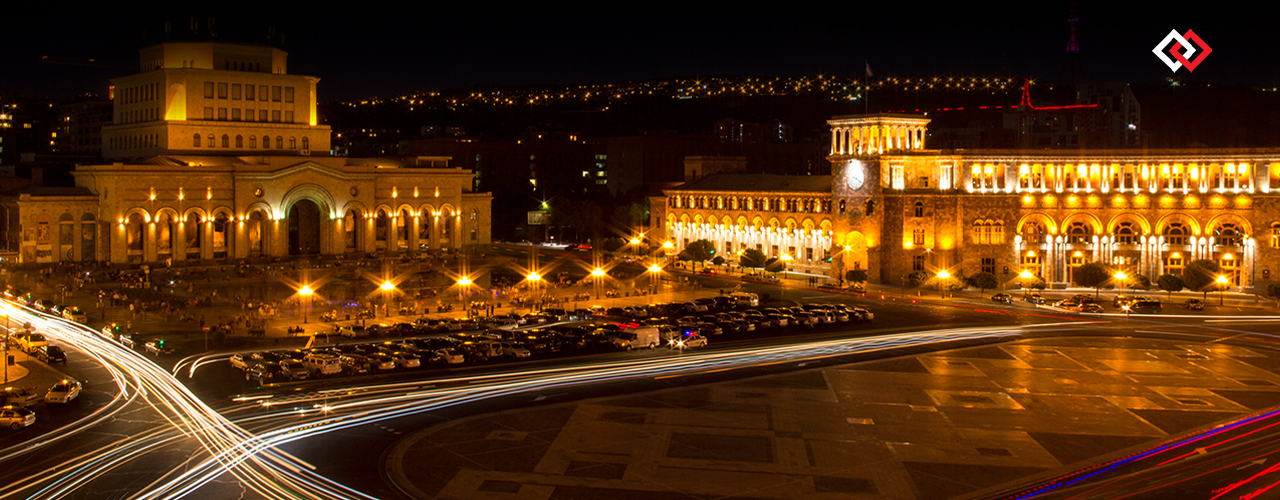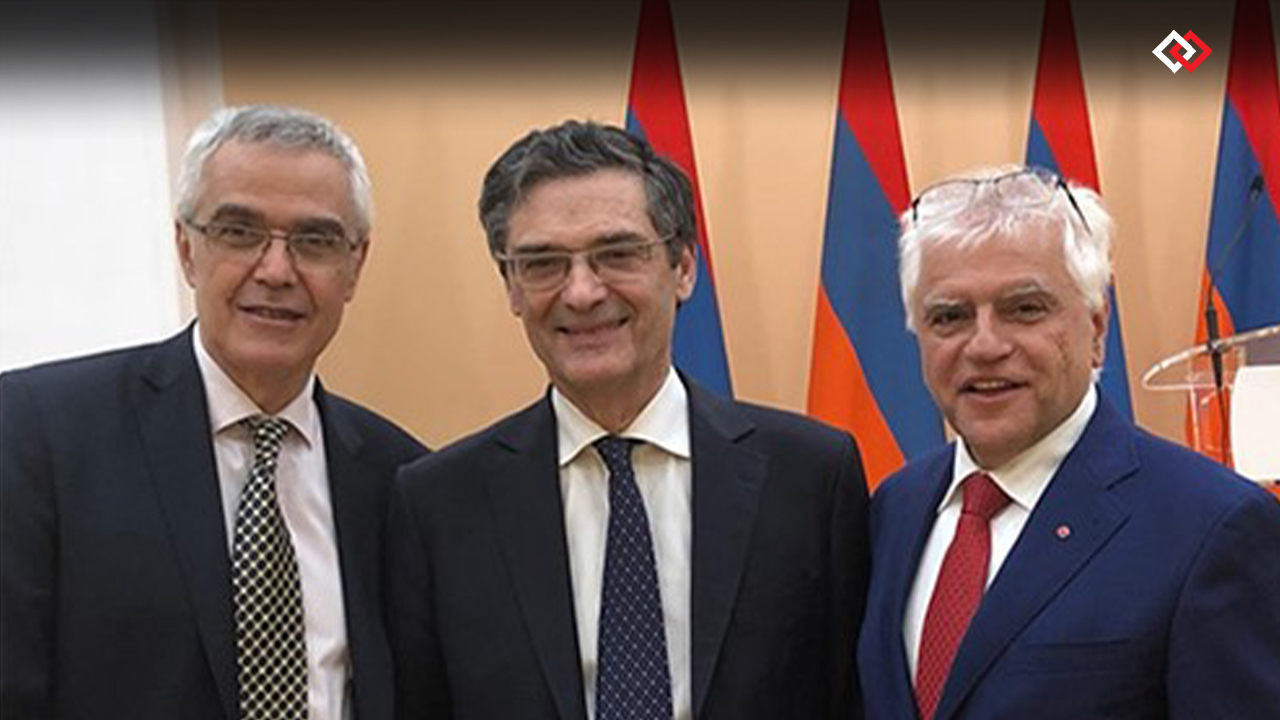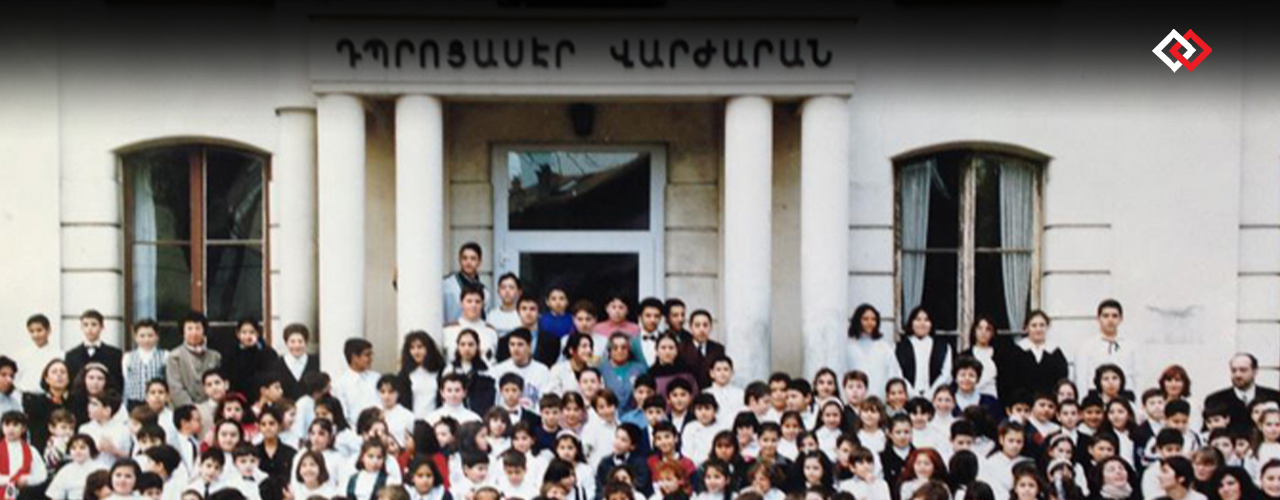What is leadership, what does it represent, and how is it determined as such? Historically, leadership and legitimacy belonged, for the most part, to the political parties and their affiliates. Since the 1990s’ affluent entrepreneurs appeared as the new leaders, who rather than writing checks to those in charge, contributed further than financially with their expertise and structures. They set up in the Homeland, aiding civil society groups, promoting education and creativity, investing in those seeking to improve themselves and their living conditions across Armenia. Some elitist entrepreneurs exclude those who do not “have”, including intellectuals, who shape society’s thinking and have a crucial role in the building of the Nation. The result increasingly is a ‘pay to play’ environment, which runs counter to the longstanding ethos and practices of our communities.
Graphic by Proper Company, exclusive to the Armenian Weekly
QUESTIONS, REFLECTIONS, PROVOCATIONS
Հոդվածն առաջին անգամ հրապարակվել է «The Armenian Weekly»-ում 2018թ․ հոկտեմբերի 3-ին։
Վերջերս Նիւ Եորքի մէջ պատիւը ունեցայ ներկայ գտնուելու Հայաստանի նորընտիր վարչապետ Նիկոլ Փաշինեանի նուիրուած ընդունելութեան հաւաքոյթին՝ կազմակերպուած ԱՄՆ-ի մէջ ՀՀ դեսպանատան կողմէ: Իսկապէս բազմերանգ հաւաքոյթ էր, ուր քով-քովի եկած էին ինչպէս հին, այնպէս ալ նոր դէմքեր: Ներկաները զանազան հարցումներ կ'ուղղէին՝ սկսած խորաթափանցէն մինչեւ անհեթեթը: Թէեւ վարչապետ Փաշինեանի պատասխանները նոր չէին, սակայն անոր խօսքը թարմացուցիչ էր համայնքի մը համար, որ շատ հազուադէպ առիթ կ'ունենայ լսելու այն քաղաքական գործիչները, որոնք չունին ցուցադրութեան միտում, կեղծիք, եւ անոնք մշտական յարգանք կը տածեն հանդէպ իրենց ծառայած ժողովուրդին:
My goal here isn’t to review this event per se. Rather, I wish to develop one aspect of it: The event was billed as a meeting “with the leaders of the Armenian-American community,” and yet it wasn’t always clear to me who that leadership is, what it represents, and how indeed we arrive at such determinations. Who qualifies as a community leader, in this day and age? A provocative question, perhaps. But an important one to consider.
The event was billed as a meeting “with the leaders of the Armenian-American community,” and yet it wasn’t always clear to me who that leadership is, what it represents, and how indeed we arrive at such determinations.
I struggled with these issues, and came away thinking it is high time to reflect on what we mean by “community leadership,” and how such meanings continue to change over time. By excavating these, I hope to offer food for thought that may guide us moving forward.
There was a time, decades ago, when our community could be described in rather straightforward terms. The vast majority of people traced their immediate roots to the yergir–Western Armenia–and to the Armenian Genocide. Leadership and legitimacy belonged, for the most part, to the political parties (Dashnak and Ramgavar, especially), their affiliated organizations (ARS and AGBU, in the philanthropic sphere; Baikar and Hairenik in the literary sphere), and the representative church bodies.
These organizations’ primacy drew upon their lore and accomplishments in the Old Country, while for succeeding generations they renewed themselves by working to keep Armenians Armenian, mainly through language, culture, and history. At the same time, these groups offered ideological stances that helped guide their people through the long years of exile, dispossession, Cold War, etc. Whether it was the Dashnaks and their stubborn dream of a free, independent, and united Armenia, the Ramgavars with their pragmatic defense of Soviet Armenia and the status quo, or the near-universal mourning and condemnation of the Genocide, the leading organizations carved out a rather stable, bipartite playing field. While the content of this playing field wasn’t always friendly or collaborative, the system – like the Cold War itself — proved to be durable and steady, lasting well into the 1960s and beyond. But beginning in the 1960s and ‘70s, this steady-state began to change. There were various reasons ranging from the global to the local but the larger effects were undeniable: A fresh generation of Armenian-Americans had begun to think and act in new ways.
Meanwhile, the influx of new Armenians – from the Middle East and elsewhere – both challenged and re-energized our existing community structures. Ultimately, the field of play became widened: Increasingly we saw groups popping up that were non-partisan, multi-sided, or unaffiliated with traditional structures. Whether their pursuits were academic, cultural, professional, advocacy-focused, or simply social, such groups gradually redefined the terms of community involvement, with aims and methods that were often pragmatic rather than ideological, “assimilated” rather than purely patriotic, “neither this side nor that,” and so forth.[1] The existing framework, while still in place, was becoming enhanced, more diverse and, some would say, decentered or even challenged.[2]
Then came 1988, and the floodgates really opened…as did Armenia itself: First there was the Karabagh movement, then the devastating earthquake, and within a few years we witnessed the USSR’s total collapse and the emergence of a fledgling, independent state. As these developments engulfed Armenia, our people worldwide couldn’t help but seek engagement – many watching from afar with renewed interest, many more contributing to aid and solidarity efforts, with a small-but-growing number of enterprising spirits seeking more direct involvement. Such activities, while certainly informed by patriotism, were equally driven by pragmatic considerations as the new Armenia presented needs both urgent and immediate.
In this environment, the diaspora’s attention became broadened, as an Armenia-focused agenda rivaled and at times surpassed, the need to keep our diasporan communities strong and vibrant. As homeland and diaspora became interpenetrating parts of a new, emerging whole, we witnessed those whose primary focus was no longer here, ‘holding the fort,’ but over there…in Armenia. (Indeed, the distinction between ‘here’ and ‘there’ became increasingly blurred.) At times, this diversification seemed to spread our communities’ resources too thin, but the renewed focus on Armenia also seemed natural, as the homeland and its people were something we had cherished and sworn to serve for so long.
Amidst all of this, something significant happened: During the ‘90s, and accelerating through the 2000s, there has been a move away from knee-jerk, emergency assistance, and increasing focus on Armenia’s long-term development. The reasons for this are many, and not really my focus here,[3] but the fact is that alongside our community-based groups, a small subset of individuals – most of them affluent – were no longer content with writing checks to those in charge. Rather, they began to move in a different direction, establishing their own mechanisms for tendering support. For example, my own employer—James Tufenkian—felt he had not only money but also expertise to offer, and thus established his own foundation in Armenia. In doing so, he gradually hired and trained his own staff, implemented projects directly on the ground, and introduced international best-practices into his organization. I could point to other examples, as well; part of a trend where diasporan engagement is no longer about immediate assistance. Instead of soup kitchens and orphanages, today’s entrepreneurs look at aiding civil society groups, promoting education and creativity, and investing in those seeking to improve themselves and their living conditions across Armenia.
Let’s fast-forward to today: Events like last Sunday’s are billed as “community leadership gatherings,” but the profile of that leadership has changed from what we once knew. Now, alongside the boots-on-the-ground, traditional leaders – the editors, educators, activists, advocates, and professionals – there are nearly as many representing a new brand of leadership: Super-wealthy individuals who have set up their own private foundations, venture groups, or exchange programs – e.g. COAF (Garo Armen), Paros (Roger Strauch), Birthright Armenia (Edele Hovnanian), TUMO (Sam Simonian), Armenia 2020 (Noubar Afeyan, Ruben Vardanyan), and more. These individuals are undeniably doing substantial work in and for Armenia, but are largely ‘one-man shows’ [sic] accountable mainly to themselves and to their donors, and who intersect rather vaguely with ongoing work in our communities here. And yet, these new actors undeniably carry popular appeal among our public, offering nourishment and inspiration to many who endorse their good works in the homeland. In that sense, they are playing a valuable, albeit different, leadership role.
Since independence, and with plenty of encouragement from Yerevan, there has emerged an overriding emphasis on money. Those who have it and spend it are acknowledged as community leaders, while those who don’t, well… sorry.
So this newly ascendant elite is not a ‘community leadership’ in the traditional sense. And yet, it’s hard to deny its role in forging new sorts of popular engagement vis-à-vis Armenia. Perhaps, then, we should simply enlarge our purview, and agree that this segment carries value equal and complementary to our existing, grass-roots efforts. In other words, leadership today consists of both 1) engagement and action for benefit of the homeland; and 2) ongoing efforts to hold us together and perpetuate us as a people. Indeed, it is hard to imagine one leadership sphere operating without the other: After all, can a New York fundraiser for Artsakh’s border villages succeed unless there is an educated, motivated audience for it?
But there is more, I’m afraid; something requiring harder thinking beyond just clarifying or broadening our vision. This is the increasing class divide between ‘old’ and ‘new’ leadership. Since independence, and with plenty of encouragement from Yerevan, there has emerged an overriding emphasis on money. Those who have it and spend it are acknowledged as community leaders, while those who don’t, well… sorry. The result increasingly is a ‘pay to play’ environment, which runs counter to the longstanding ethos and practices of our communities.
Now, some will say that ‘pay to play’ has always been present, to some extent. Maybe so. But today, it is pervasive, seeping into every corner of our community life, rescaling the balance of everything it touches.
Fading, it seems, are the days when we relied on all sorts of leaders: A church annual meeting, for example, might include in its deliberations accountants, garage mechanics, schoolteachers, shopkeepers, as well as affluent professionals and business folk; each contributing in one way or another. That model, while still operative in some locales, is becoming passé, it seems, on the national stage.
In its place is a bold, new elitism—informed by neoliberal ideology—where private wealth trumps collective decision-making, and where a culture of corporate power, celebrity, and individualism somehow magically begets wisdom, sophistication, and progressive ideas.
In such an environment, our balance as a community—indeed, the very notion of community—becomes crucially challenged. For as I’ve indicated above, while the new elite have much to offer, their rhetoric and modus operandi sometimes imply that they think they can go it alone, as self-generated benevolent agents. But without strong communities, from the bottom up, there wouldn’t be much of a constituency for such benevolence, would there?
To illustrate this problem, I point to an Open Letter, published in the New York Times on October 28, 2016, entitled “The Future for Global Armenians is now.” The letter, signed by 23 individuals, called for a “higher level of sustained commitment” from the global Armenian community, so as to “bring Armenia to no less than the same global standards as those of the countries in which many of us in the Diaspora live” and foster an “unprecedented spirit of partnership and coordination among all Armenian organizations and individuals.”
Yet in spite of its noble call for unity, the letter—which claimed to represent a pan-Armenian nation—fell short. Its 23 signatories consisted only of an exclusive list of prominent, wealthy, or powerful individuals. Of these 23, only one was a woman.
If the signatories’ intent was to lead the nation, then what about the rest of us? How about the construction workers in Yerevan who are barely paid by their oligarch overlords, the communities living amidst toxic strip-mines of Meghri, the former professors-turned-taxi drivers who eke out a living on the margins of today’s Yerevan economy? How about the unsung, blue collar heroes who toil in relative obscurity upholding our schools, filling our churches and community centers in diaspora? And what of the young activists in Armenia who have moved mountains to refashion the political landscape of the country? Nowhere are they represented in this statement.
Indeed, I get the sense that this message is intended for everyone, but not meant to be by everyone. Put differently, there appears to be a rhetorical commitment to “for the people,” but an aversion/avoidance of “with and by the people.” If so, then we have a problem.[4] One problem with the new elite is that its methods and reflexes don’t always mesh well with communal living: We can’t just work for the people, as if they are beneficiaries or charity cases; we must also work with the people, and that means everyone. Are we to believe that no one – no labor organizers, no environmentalists, no feminists or investigative journalists – are worthy or sophisticated enough to sign statements such as the above? Are these people any less ‘worldly,’ any less global, simply because they aren’t at the top of the capitalist food-chain? This is frankly elitist, insulting, and ultimately counterproductive. Indeed, if we are truly concerned about our communities, then it’s incumbent on us to strengthen ourselves collectively – from top to bottom, at home and abroad – where one segment cannot fulfill its potential without strengthening the other. That is the kind of national unity I hope we have in mind.
I find it ironic, somehow, that such ideas are flowing on the occasion of Nikol Pashinyan’s visit. For Pashinyan’s message – empowering each and every citizen, emphasizing the rights and responsibilities of all, and seeking to restore some public into the notion of public service – would seem to beg for a broader leadership line-up than the one the Embassy assembled.
Perhaps we should heed Pashinyan’s message, and seek to refashion the playing field in diaspora as well… a playing field that makes use of all of our talents and abilities, in an environment where we encourage entrepreneurship and healthy competition, for sure, while emphasizing ongoing collaboration and mutual support. We have a way to go in restoring such balance, but it can be done.
Notes:
- Some examples of this trend are NAASR re academia, the Armenian Assembly re advocacy, Friends of Armenian Culture Society re culture, the Armenian Reporter re journalism, and PAND (Philadelphia Armenian Nor Daree) in the social sphere.
- Regarding ‘challenges to the existing framework,’ we might also mention groups, e.g. ASALA, that arose as a radical response to perceived conservatism of the mainstream parties.
- For more detailed treatment of this matter, see my article entitled “Twenty-Six Years On: From Charitable Assistance to Social Change,” appearing in the Armenian Weekly on 9/21/2017.
- To my knowledge, there has been only one public critique of this Open Letter. That came several days later, as several dozen activists decried the statement’s tokenism and gender-inequality, as it claimed to represent the nation, but with only 1 woman among 23 signatories. To this day, I have seen no other critiques, and certainly no critiques of the letter’s broader content or its elitist, neo-liberal implications.

